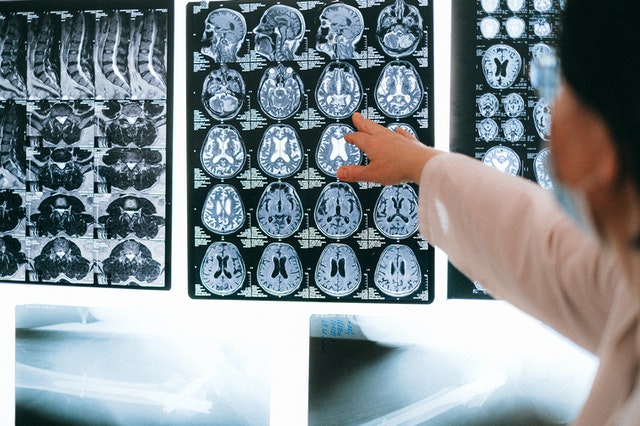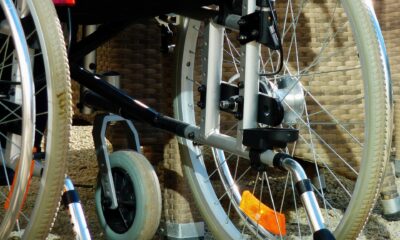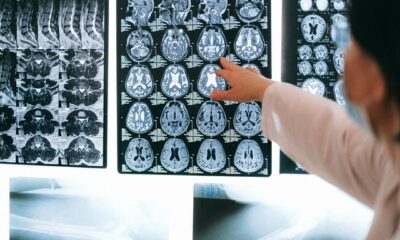Health & Fitness
5 Treatments for Epilepsy
Having epilepsy can be a scary condition but with these treatments your quality of life can improve.

5 Treatments for Epilepsy
Epilepsy is a frightening condition where the brain short circuits resulting in seizures. The seizures can range from mild to full-body convulsions, and they can last for several minutes. It’s alarming when these seizures are not adequately controlled, as there are many options available.
The medical community continues to develop new and more effective ways to treat this condition, and you should know what options are available to you.
Seizure Treatment Options
If you or someone you love suffers from seizures, then you know that treatment is essential. Since this condition is unpredictable, you want to ensure that you are well informed about your treatment options. Here are the five most common methods used for seizure treatment.
1. Medication
The first thing that most neurologists want to do is start a patient on medication. These FDA treatments are called anti-convulsant, and they’re often used for other medical issues too. To confirm the presence of seizures, a doctor will do several tests, including an MRI, CT Scan, EEG, and bloodwork.
The new wireless eeg machines make the test so much more straightforward than before, and it’s perfect for children who might fear such devices. Once a diagnosis is confirmed, the proper medications will be prescribed. Medications alone may not be able to keep seizures at bay, but they might be combined with other therapies to bring you relief.
2. Diet and Lifestyle Changes
One of the most critical aspects of managing seizures is your diet and lifestyle. Did you know that certain things trigger seizures? While the keto diet seems to be a new fad craze that has everyone cutting their carbs, it’s been around for some time.
The diet was started back in 1923. Dr. Russell Wilder was a physician on staff at the Mayo Clinic, and he developed this diet to help control seizures. He found that seizure activity could be regulated by increasing the amount of fat a person ate while decreasing sugar and carbs. His groundbreaking research was used to manage this condition long before there were good medication options.
Today, diet control is still widely used for this illness, as well as lifestyle changes. Cutting out things that overstimulate the brain, like caffeine and alcohol, is essential, as is getting sufficient rest.
3. Extracranial Neurostimulators
Electrical stimulation is a radical treatment that fares well. A small stimulator is inserted into the neck to invigorate the vagus nerve. The device sends a 30-second pulse of electricity every few minutes to keep seizures at bay.
A magnet is placed inside the body that turns the device on should the heart begin to race, or a seizure begins. The electronic pulses can stop the attacks or reduce the severity of the episode. The only downside is that this procedure requires surgery to place the device inside the neck, but another VNS system doesn’t require an operation.
External trigeminal nerve stimulation works to stimulate the nerves on the face rather than the ones in the neck. Many opt for this method as it doesn’t require any surgery.
4. Deep Brain Stimulation (DBS)
Deep brain stimulation is very much like RNS, but the location of the electrodes is different. In DBS, surgeons place the stimulator inside the thalamus region of the brain, which is responsible for focal seizures. If your doctor has determined that your episodes start in one area of the brain, they may look at this option for treatment.
While it doesn’t regularly trigger like the extracranial neurostimulators system, it kicks into action when it indicates any seizure activity. The FDA just approved this treatment method back in 2018, so those with focal epilepsy have an effective surgical option.
5. Brain Surgery
Brain surgery is the best option if you want a more permanent method to keep seizure activity at bay. This however is recommended as a final resort. The doctor will look for the seizure focus or the area where these electrical occurrences begin. They find this area by putting electrodes on the scalp or inside the brain.
Once the area is found, it can safely be removed. Some surgeons use newer methods that send lasers with blasts of heat to the site to stop seizures rather than removing them. According to the Mayo Clinic, these surgeries work best when the seizure activity is only on one side of the brain, and the recovery rate is 60-90 percent.
Finding the Best Treatment Options
Sadly, when you’re dealing with seizures, no one treatment fits all. You must try different methods to find the one that works best for you. Some can be completely controlled with medications, while others will need more invasive techniques to find relief. The key is to work with a well-trained neurologist so that you can stay up to date on new treatment options.













